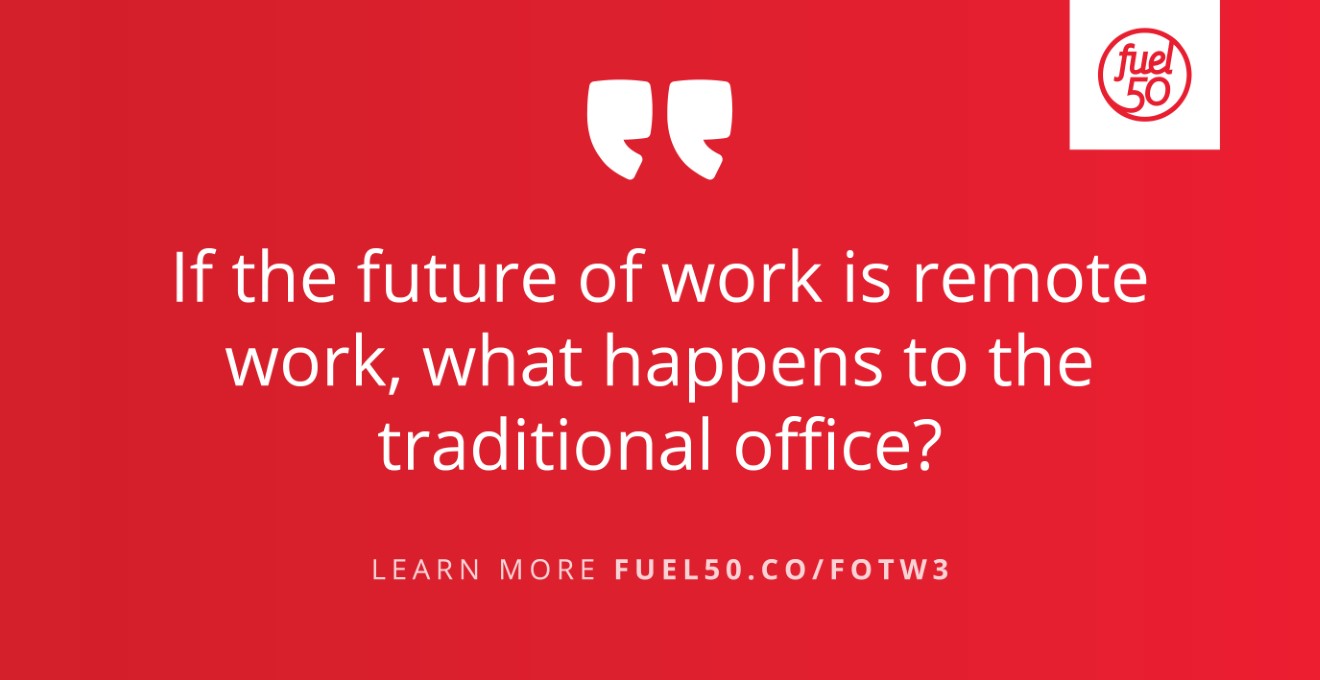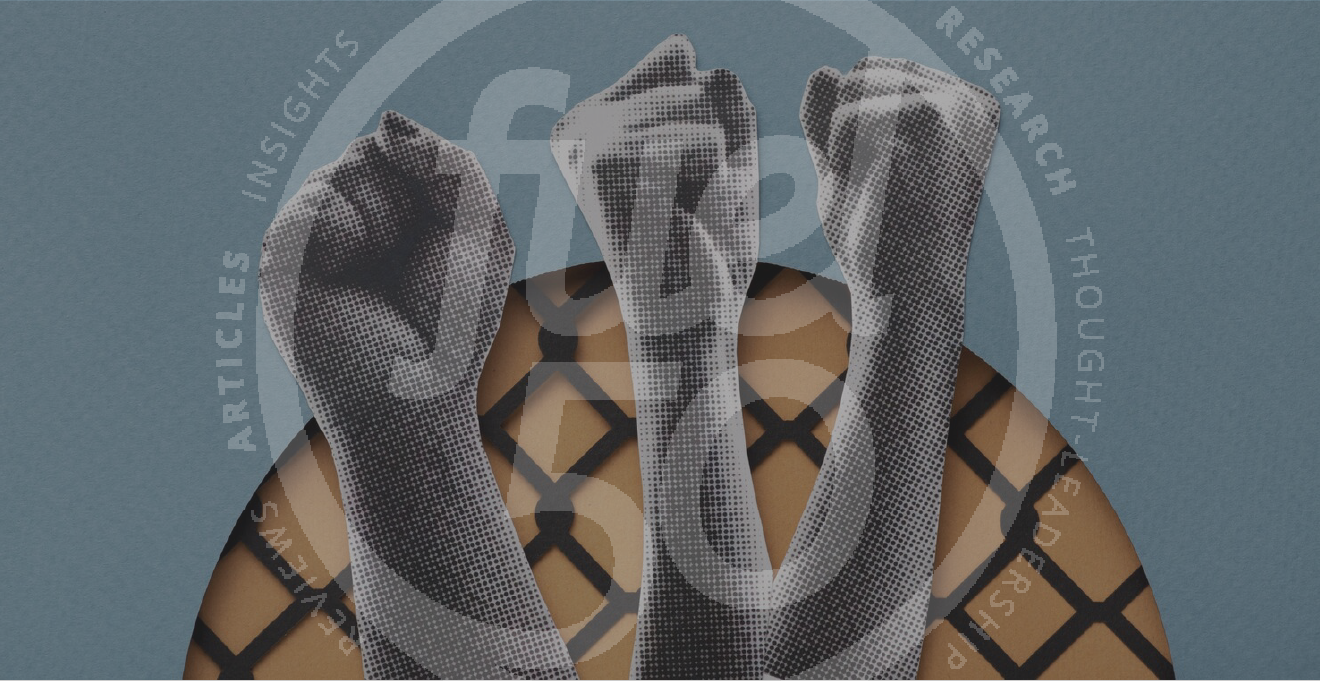If we have learned anything from the global coronavirus lockdown, it is this: the future of the worker, and the workforce, is being driven by massive change. If the future of work is remote work, as we have written here before, what happens to the physical office where everyone used to gather and work?
Does it simply disappear and become a fond memory of life before Covid-19, a reminder of a nostalgic time when we were more focused on work and less concerned about how the workplace could inadvertently help spread a highly infectious disease?
That may be the case, but it misses something more relevant, and urgent — what happens to people who simply CAN’T work remotely and must report daily to a workplace somewhere?
In other words, what happens to the traditional office in our New World of Work?

Social bonds are critically important
These are important questions, and for all we have heard about remote work becoming the “new” normal, we tend to forget that for some people, remote work is just not a realistic option.
Yes, there are still a great many employees — half of the U.S. workforce, by some estimates — who don’t have a choice about coming to work. They MUST work on-site, and they want to stay safe, engaged, and motivated in their work, too.
A new research paper from TerraLex, titled Workplace Changes in Times of Pandemic, focused on remote work vs. traditional office environment (primarily in Australia, China, United Kingdom, and the USA), and how today’s employees may be impacted long term:
“It is predicted that, as previously reluctant industries have now been forced to invest in more remote working technology, it could result in a permanent shift towards working from home. … As a result of the lockdown measures, it is now estimated that over half of the employed American adults are currently working remotely.
It seems inevitable that the longer the American workforce is required to work from home, the higher the likelihood that a higher proportion of employees will simply continue to work remotely following the pandemic, as they may question whether they need to return to the office workplace at all.
However, this is not to say that there are no benefits of working in an office environment, or that no one will wish to return. We envisage that many workers will opt to return to the office environment, as the office work environment generally enables the increased development of social bonds necessary for effective teamwork and eliminates distractions faced in the home environment. ”
Those “social bonds” that are necessary for effective teamwork are an important consideration, and what seems to have been missed the most during the lockdown is the camaraderie that people get when they gather somewhere.
And this is true if people gather at a house of worship, a youth soccer game, or in a traditional office environment.
Half of Facebook employees want to return to the office
Here is a good example of the struggle both workers and managers are having with this New World of Work:
The Wall Street Journal reports that “the jury is out on whether the benefits of working from home outweigh the disadvantages.”
They report that, “Facebook in May said it expects it could have half of its employees working remotely in the next five to 10 years — a policy Chief Executive Mark Zuckerberg said he thinks will be ‘the most forward leaning’ at his company … He has cited stable productivity from at-home employees so far and the promise of untapped, potentially less costly remote talent as compelling benefits. … Similarly, a recent survey by Facebook found more than half of employees reported being at least as productive at home as in the office.
But there are concerns, too: Zuckerberg said last month that half of his employees ‘really just wanted to get back to the office as soon as possible,’ and suggested a lesser feeling of alignment without free-flowing conversations and in-person connections. ‘It’s unclear at this point whether we’re just all drafting off of existing bonds that have developed before it started,’ he said.”
Forbes makes a similar case in a recent interview with Adam Weber, Chief People Officer at Emplify, an Indiana-based employee engagement company. He makes the case that in the New World of Work, “Offices (will be) for camaraderie, not accountability.
Weber does not believe that offices will disappear completely post-COVID, but he does think that the main purpose of the physical office will change. “Offices will be a place of convenience and camaraderie rather than accountability,” he said. “We’ll see more companies moving to a ‘remote-first’ model where people can work wherever they want, whether that’s in the office or elsewhere.”
However, remote workers know that the No. 1 thing that gets lost when they work outside the office are the personal interactions and random conversations that spontaneously take place in a centralized office environment.
Sometimes these conversations are personal, and sometimes they are work focused, but in almost ALL cases these conversations add an intangible but critically important element that just cannot be duplicated when people work remotely.

The importance of the “camaraderie quotient”
The TerraLex white paper on Workplace Changes in Times of Pandemic described this intangible element as the “camaraderie quotient,” and for a great many remote workers, it’s what they miss most – and think about a lot – as they’re off working remotely, by themselves, and out of the normal energy and hubbub of daily office life.
Another study from McKinsey on how workplace life might change after the coronavirus also touched on this issue, but not before noting that 80% of the people they questioned say that they enjoy working from home, with 41% saying that they are more productive working remotely, and an additional 28% who believe they are just as productive working remotely as they were in a regular office environment before Covid-19 kicked in.
“Many employees liberated from long commutes and travel have found more productive ways to spend that time, enjoyed greater flexibility in balancing their personal and professional lives, and decided that they prefer to work from home rather than the office. Many organizations think they can access new pools of talent with fewer locational constraints, adopt innovative processes to boost productivity, create an even stronger culture, and significantly reduce real-estate costs.”
Those are the positive elements of remote work, however McKinsey also felt they needed to add this cautionary note to all those managers who believe that this new remote work environment is the answer to all their talent management prayers:
Is it possible that the satisfaction and productivity people experience working from home is the product of the social capital built up through countless hours of water-cooler conversations, meetings, and social engagements before the onset of the crisis? Will corporate cultures and communities erode over time without physical interaction? Will planned and unplanned moments of collaboration become impaired? Will there be less mentorship and talent development? Has working from home succeeded only because it is viewed as temporary, not permanent?”
A great experiment for employers everywhere
These are GREAT questions to ponder as we move ahead into (hopefully) a post-coronavirus period where life and work slowly starts to return to what it was before the global lockdown kicked in.
McKinsey’s view is that employers everywhere are engaged in a great experiment about when and how to bring employees back to the office, and, when it makes more sense to have them work remotely. They end their report with some wisdom that EVERY manager and workplace leader need to consider, and ultimately, take to heart:
“Organizations must … use this moment to break from the inertia of the past … (Leaders can leverage) a well-planned return to offices … to reinvent their role and create a better experience for talent, improve collaboration and productivity, and reduce costs.
That kind of change will require transformational thinking grounded in facts. Ultimately, the aim of this reinvention will be what good companies have always wanted: a safe environment where people can enjoy their work, collaborate with their colleagues, and achieve the objectives of their organizations.”
Webinar: Capability-Driven Workforce Transformation
Join Fuel50 and Josh Bersin on 14 July, 11am PST as we discuss new talent imperatives, the return to work, and capability-matching intelligence to meet workforce agility demands.







